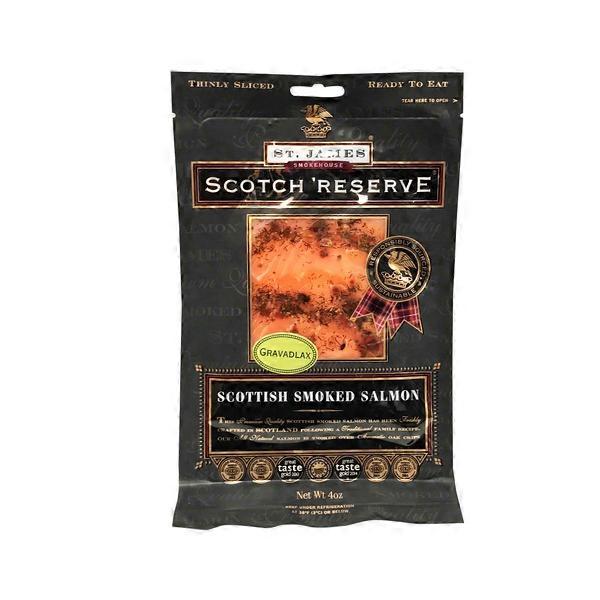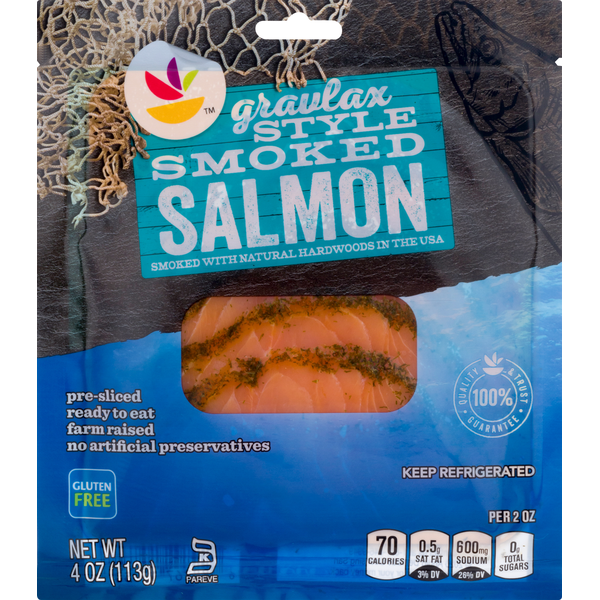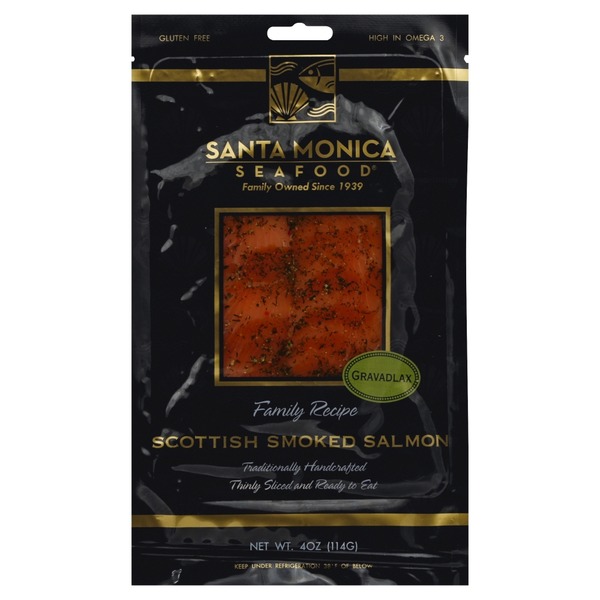Salmon Gravlax
Gravlax is a Scandinavian delicacy made from raw salmon. Originally, it was prepared by fishermen who salted the fresh salmon and lightly fermented it by burying it in the sand above the high tide line. Today, it's a must-have dish served in a thin, elegant slice often accompanied with dill, mustard, and bread.
Gravlax is enjoyed not just for its rich, unique taste but also for its nutritional value. Packed with omega-3 fatty acids, lean protein and various essential nutrients, it serves as a tasty and healthy option. Making it at home requires few ingredients and can be a culinary adventure in your very own kitchen.
5%
CARBS
38%
FAT
57%
PROTEIN
19 Salmon Gravlax Products
Wild Alaskan Sockeye Smoked Salmon - Gravlax by Echo Falls
Specially Selected Cold Smoked Salmon Gravlax
Specially Selected Cold Smoked Salmon Gravlax
St. James Scotch Reserve Smoked Salmon Gravadlax
Ahold Smoked Salmon, Gravlax Style
Whole Catch, Cold Smoked Farm-Raised Atlantic Salmon, Gravlax Style
Salmon Gravlax
Gerard & Dominique Wild Coho Gravlax
Santa Monica Seafood Salmon, Scottish Smoked, Gravadlax
Spence & Co Gravlax, Scandinavian Style
Salmon Gravlax FAQ
Gravlax is a Scandinavian dish that many love, yet people tend to have reservations about making it at home due to it involving raw fish. The most common issues when making Gravlax relate to the selection of the fish, the use of right amount of salt and sugar, and the curing process duration. Many times, people don't use fresh enough fish which significantly affects the quality of the Gravlax. Others make mistakes in curing, and either overcure making the texture too stiff or undercure leaving it too raw. Using the right amount of salt and sugar is also crucial for achieving the perfect balance of flavors.
To make the most out of your Gravlax, start with the freshest quality of salmon you can find. The use of right mix of salt, sugar, and herbs such as dill, can create a depth of flavor in Gravlax. Make sure you are patient and allow it to cure appropriately for about 48 hours for the flavor to fully develop. After you've successfully made Gravlax, you can enjoy it on crackers, sushi, bagels, salads and so much more.
A lesser known tip about Gravlax is that you can play around with the flavor profile by swapping out the dill for other fresh herbs such as fennel or adding a touch of liquor like gin or vodka to the curing mix for a twist.
How thin should the slices of Gravlax be?
How do I know if I've cured the Gravlax enough?
What kind of salmon should I use for Gravlax?
Is it safe to make Gravlax at home?
How long should I cure the Gravlax?
Can I use other spices instead of dill?
Why is my Gravlax too salty or sweet?
What should I do with the liquid that comes out during curing?
Can I use other types of fish to make Gravlax?
Can I add alcohol to the cure?
Health Info
Macros
0g
CARBS
7g
FAT
14g
PROTEIN
Allowed on these diets
LACTOSE FREE
GLUTEN FREE
Contains these allergens
FISH














